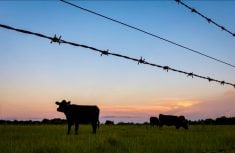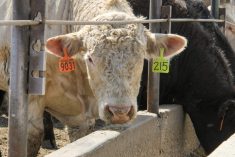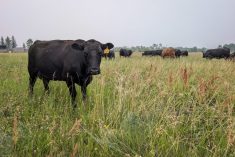Edmonton — Don’t know if your local elevator is offering a good price or not? There’s an app for that.
Or at least there will be once www.pdqinfo.ca is fully up and running.
The new website, created by the Alberta Wheat Commission with $742,725 in federal funding, aims to give farmers timely and accurate pricing data for grains and oilseeds.
“We feel strongly that this project has the potential to change the way farmers market their crops through access to better and more timely information,” said AWC chairman Kent Erickson.
Read Also

U.S. grains: CBOT soybeans, corn, wheat fall in USDA data aftermath
Chicago grains took a dive on Friday, following a closely watched U.S. government crop report and the release of export data that could provide clues into Chinese buying.
“Our ultimate goal is a more transparent market, one that enables producers to be able to capture the marketing opportunities available to them.”
Currently it’s hard for grain farmers to get a firm handle on prices being offered for their crops, said federal Agriculture Minister Gerry Ritz, who flew to Edmonton to announce the project Wednesday at FarmTech.
“There are a number of websites that are up there now, including some of the grain companies’, that claim to be price-transparent,” said Ritz. “The problem is a lot of them are two or three weeks out of date. So this will be very timely (and) updated daily or on our half-day basis.”
“There is a varying degree of where farmers are looking for price,” added Erickson, who farms near Irma, Alta. “It is currently very fragmented. The new website gives a good benchmark and more accountability is going to make the website better.”
The website — pdq stands for “price and data quotes” — is currently in pilot mode and offers just a single price for four crops: Canada Western Red Spring, Canada Western Amber Durum, Canada Prairie Spring Red and canola.
The website covers eight zones (three in Alberta, four in Saskatchewan an one in Manitoba) and offers a price for each zone. Additional crops and more detailed pricing will be added in the coming weeks and months, said Erickson.
“The more companies that get involved and contribute to the background of the website, it will make the website that much more robust,” he said.
And there will be a mobile version, too, Ritz said.
“It will be an app on your iPhone or Android or whatever you have, and if you’re looking for a certain price, it will ping you when the market hits that price — that’s the ultimate goal,” said Ritz.
“In the game”
Producers need to have a clear idea of what the current “benchmark” price is before they start calling their elevators, said Erickson. And any substantial change in that price will alert them that something is moving the market.
The pricing data will be supplied voluntarily by a cross-section of buyers and sellers, said Ritz, and both he and Erickson said getting their participation will be critical to the success of the initiative.
“The discussions have been ongoing with a lot of them,” said Ritz. “Of course, the smaller and mid-range players like this idea because it lets them show they’re in the game. The bigger ones will tell you, ‘We have our own websites,’ and they do — but it comes down to the accuracy and timeliness of those websites.”
Having up-to-date information available to marketers in a “neutral, public place” will benefit all stakeholders in the ag commodity trade, the commission said.
“Having all this information in one place will help farmers make better judgments on when and where to price their grain,” Levi Wood, president of the Western Canadian Wheat Growers, said in a separate release Wednesday.
“It will also help the trade in developing their grain marketing plans and executing their sales programs.”
— Alexis Kienlen is a reporter for Alberta Farmer Express in Edmonton. Jill Burkhardt is a farmer and farm journalist based at Gwynne, Alta.














